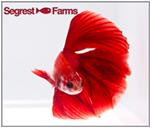If you're wanting to set up a new aquarium, hopefully you've taken the time to do your research and are fully prepared. What fish will you keep? What water chemistry do they need? Are there specific challenges to keeping the fish you're looking at that need to be overcome? The questions can seem endless, and it's possible to hit a point of "analysis paralysis" where you start to almost ask too many questions, stopping your forward progress.
At some point, though, it's time to take the leap and dive in. So you decide on the goals for your aquarium, go to the store and buy all of the equipment, and now you have a pile of equipment ready and waiting for you. What do you do now?
One of the most frustrating situations you can find yourself in is thinking you have everything ready to go, start putting the pieces together, and then find out that you are missing a key component. Double check now to save yourself from that headache.
Some of these supplies are absolutely vital, while others may be optional for you. Make sure you know which are which.
-
Tank - Getting the largest tank your space and budget allows will give you the most flexibility for stocking, helps provide a healthier, more stable environment, and will be more satisfying in the long run.
-
Stand - Water and rocks are heavy! Make sure your stand can support that weight, which typically means choosing a stand made specifically for aquariums. Other furniture is risky and should often be avoided.
-
Substrate - Generally speaking, a layer roughly one inch thick should be fine for most aquariums. The classic rule of thumb for estimating how much you will need is to start with one pound per gallon of water, though different tank dimensions and different goals will determine the exact amount you need.
-
Filter - Most tanks will need a filter, and all tanks will be improved by one. Whether you get a hang on back, canister, a sump system, or your tank has built in filtration, make sure it's strong enough for your tank and you know how to use it. If you're concerned about whether your filtration will be strong enough, err on the side of going stronger. There's almost no such thing as overfiltering your aquarium.
-
Heater - The majority of fish come from tropical environments and need water warmer than room temperature. If you're choosing coldwater fish such as goldfish, though, a heater may be unnecessary. Make sure it's strong enough to keep your aquarium temperature stable. Consider using two smaller heaters instead of one stronger heater for some additional protection in case it stops working.
-
Lights - Unless you are trying to keep aquatic plants or live corals, the light you choose is going to be for your enjoyment. The more light you have, though, the more likely you are to have trouble with algae. Try to choose lights that provide good visibility without fueling too much algae growth.
-
Water Treatment Materials - If you're very, very lucky you have access to water that exactly matches what your fish will need. If you're like most aquarists, though, you'll need to do something to prepare it for your fish. A dechlorinator that neutralizes both chlorine and chloramine is a must. You may need to add a buffer to control the pH or hardness. Or you may want to use an aquarium salt mix.
-
Test Kits - Being able to monitor and control pH, ammonia, nitrite, and nitrate is vital to being successful. Try to get a high quality test kit that can reliably and precisely measure at least these parameters. You may also want to test for other parameters as well. Liquid test kits are a little more expensive but will last for a very long time and tend to be less prone to humidity damage and loss of accuracy than the strips.
-
Hardscape - Hardscape typically refers to driftwood and rocks you use in your aquarium, but you can expand that to include any non-living decorations you include in your aquarium. While well-chosen hardscapes can help your fish feel comfortable and secure, what you choose to use is often largely determined by your personal preferences. Keep in mind, though, that some rocks can alter the pH of your aquarium.
-
Plants - Live plants can provide a wide range of benefits, but they do come with a distinct set of challenges. Unlike fish, plants can be added as soon as you set up your aquarium and they will help reduce or, in a heavily planted aquarium, can even eliminate the nitrates that will build up.
-
Plant Equipment - If you're going to be setting up a planted tank, you need to determine what additional equipment (if any) you may need. Do you need a CO2 system or pH drop checker?
-
Powerhead - Sometimes you may want more current in your tank than your filter alone will provide. Powerheads will allow you to increase the amount of water flow in your aquarium and avoid having "dead" pockets of water without circulation where detritus can build up.
-
Air pump and stone - Most filters will provide enough aeration that an external air pump isn't necessary, but many people like having them. Even if you don't need one, there's little if any chance of it causing any harm in your tank.
-
Background - You may decide that you do not want one, but if you do it is much easier to install it before having water in the tank. There are also artificial rock backgrounds that you can purchase that can go inside the aquarium and hide your equipment.
-
Gravel Siphon - Gravel siphons will be an essential part of your aquarium maintenance. If you have a large tank or would like to make water changes extremely easy, there are even some brands that you can actually attach to a sink.
-
Miscellaneous Odds and Ends - It's the little things that you may come home without that you may find yourself missing. Air tubing, checkvalves for air tubing, thread seal tape, etc. These are all very easy things to overlook when you are purchasing your entire set up and can be frustrating to not have when you get home.
|





